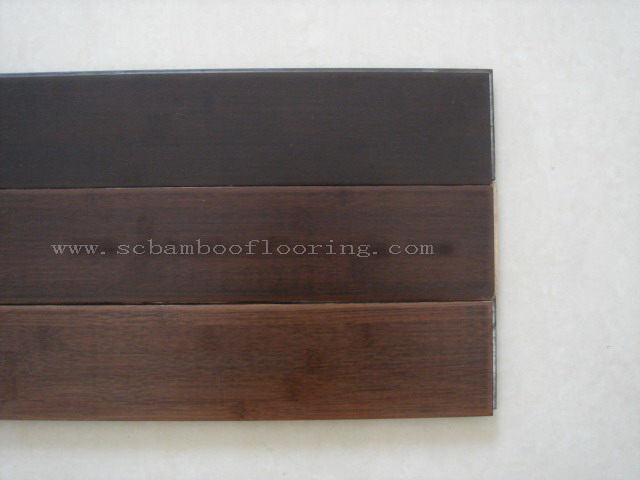Homeowners trying to decide which kind of bamboo floor to choose might be confused as to what the differences in each one are and why they should choose stranded bamboo.
Bamboo planks are made by using thin strips of bamboo that are pressed together the either glued or laminated to make the flooring planks. These are strong and durable and an excellent flooring choice.

Stranded bamboo flooring is made from the excess pieces left over from making the plank flooring. These pieces of bamboo are woven tightly together, coated with an adhesive and then tightly compressed and allowed to set up. The resulting material is then cut into planks to be used as flooring.
Stranded flooring is stronger than plank bamboo flooring due in part to the adhesive coating and compression period. However, its main strength comes from the weaving process. As basket weavers can attest, weaving materials together creates a tightly locked bond that is superior in strength to unwoven materials of the same kind.
Coloring stranded bamboo flooring is the same as it is with standard plank bamboo flooring. It can be left natural and light, which is beautiful in itself or it can be colored.
Colorization of stranded bamboo can be done using carbonization or stains. Carbonizing the bamboo produces a deeper color but is still natural. On the other hand, staining bamboo flooring can produce any color desired. As with any wood flooring, the bamboo will have variations in it due to its natural grain being different throughout the wood.
Things to Consider
There are a few important details to take into consideration before deciding on stranded bamboo flooring. The main considerations concern the installation process.
Using nails to install the flooring can be very difficult and hard to do. The weaving process creates a very thick, strong flooring that can crack and tear during the process of installing. This is why gluing the flooring is the preferred method of laying the flooring.
Professional installations are the preferred method as they are not only skilled at the process but they are typically liable if they damage any planks and will have to replace them, a small but possibly money saving tip to remember.
Bamboo can be used in virtually any room in the house with the exception of the bathroom or any room that is exposed to high amounts of moisture. Even though bamboo is naturally moisture resistant, long term exposure to water can cause the boards to warp.
Regardless of which type of flooring is chosen, plank flooring or stranded bamboo flooring, the final product will be long lasting, and the envy of the neighborhood.










.jpg)















